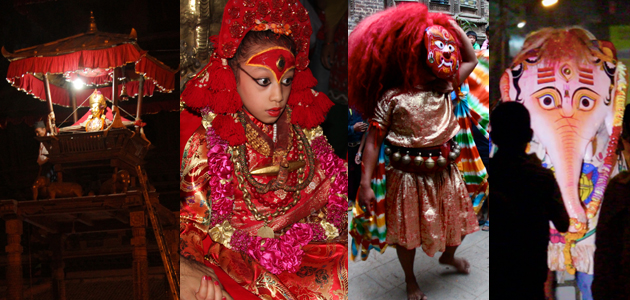
Welcome guest, you can login or create an account
इन्द्र जात्रा – Indra jatra: An eight-day Festival

Indra jatra starts on the twelfth day of the lunar bright fortnight (Bhadra sukla pachaya) in Bhadra, and ends on the fourth day of the lunar dark fortnight (Aswin Krishna pachaya) in Aswin.
The festival is the mixture of Hindu and Buddhist festivals. On the first day of the festival, a wooden pole called Indradhoj is erected at Durbar square in Kathmandu; Akash Bhairava at Durbar Square, and Seto Bhairava at Indrachok, and a life-size idol of Indra at Maru tole are put on display for eight days.
Lakhe, Halchok Bhairava, Mahakali, Pulukishi, and Pancha Buddha dance are held at Layakul (Durbar Square), and at other important places during the festival.
On the night of the fourteenth day, Goddess Dangi goes around looking for her son Indra. Sons and spouses of deceased persons follow Dangi. On the same night, a special lamp called Baumata is taken around presumably for giving light to Dangi.
Chariots of Living Goddess Kumari, Lord Ganesh, and Lord Batuk Bhairava are pulled to the southern end of ancient Kathmandu on the fourteenth day, and to the northern Kathmandu the next day, and to the Kilagal on the last day of the festival. The Indradhoj is pulled down on the last day, and dragged to the Vishnumati River, and burned to it down.
